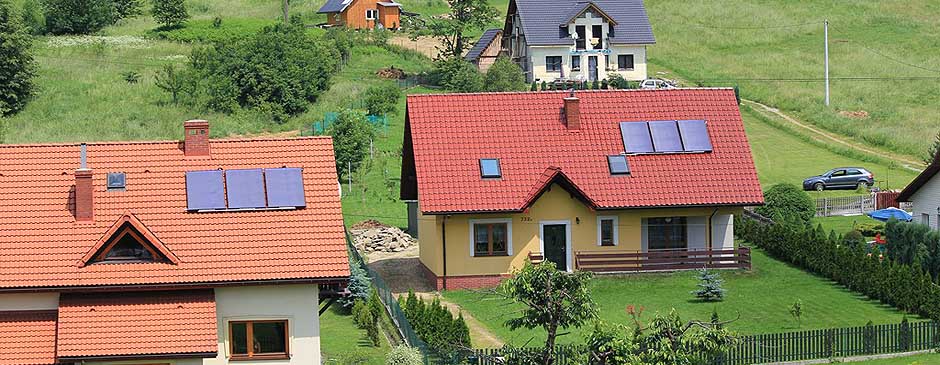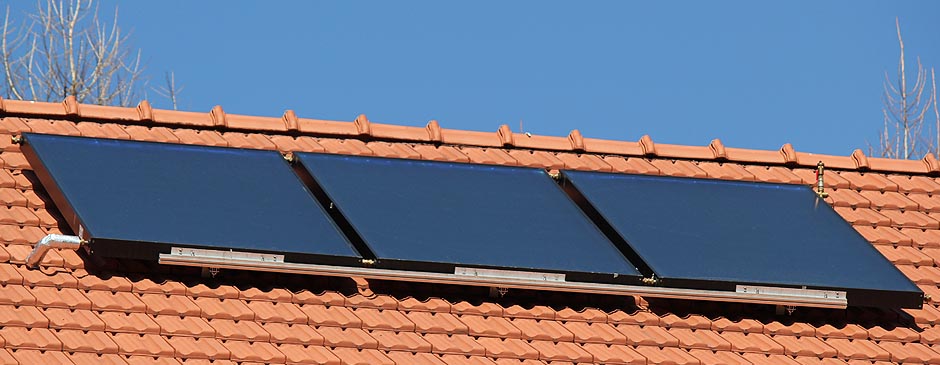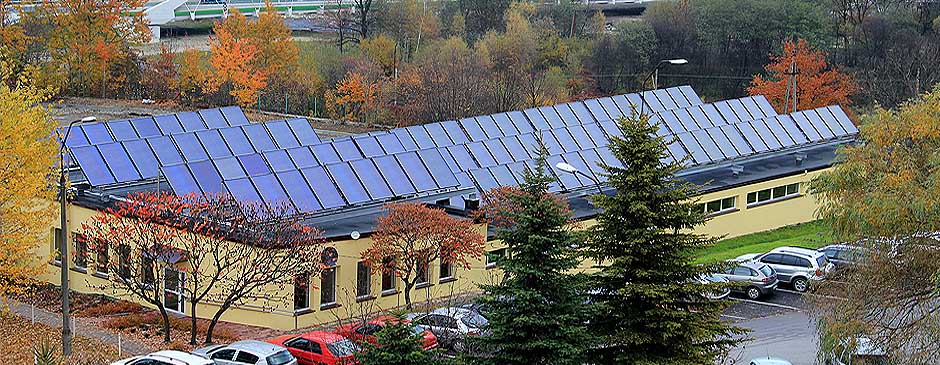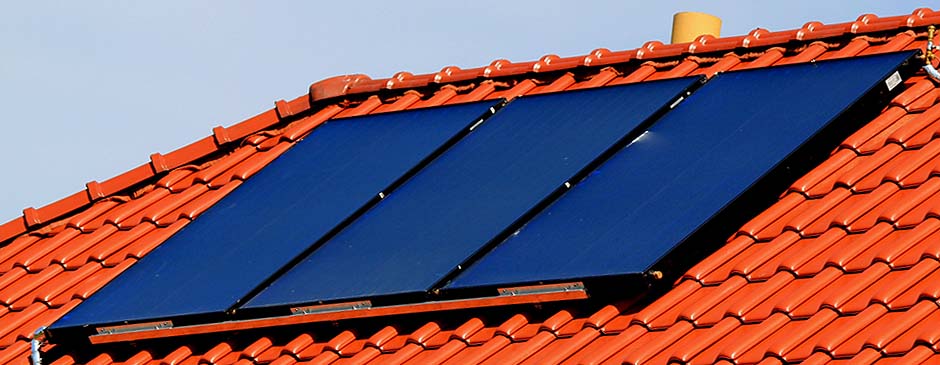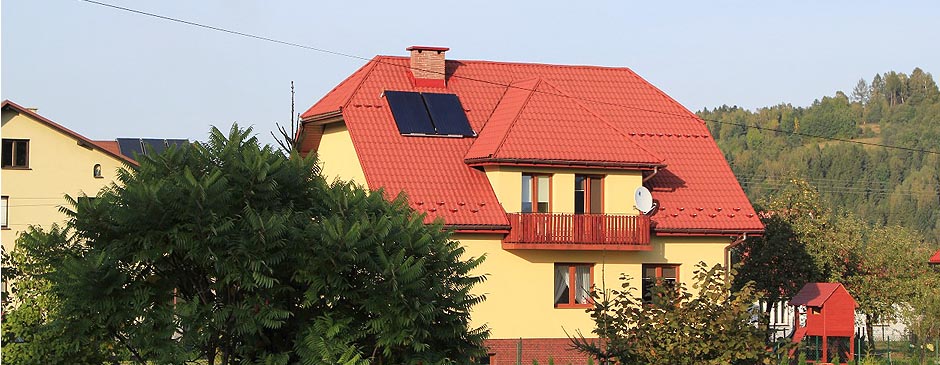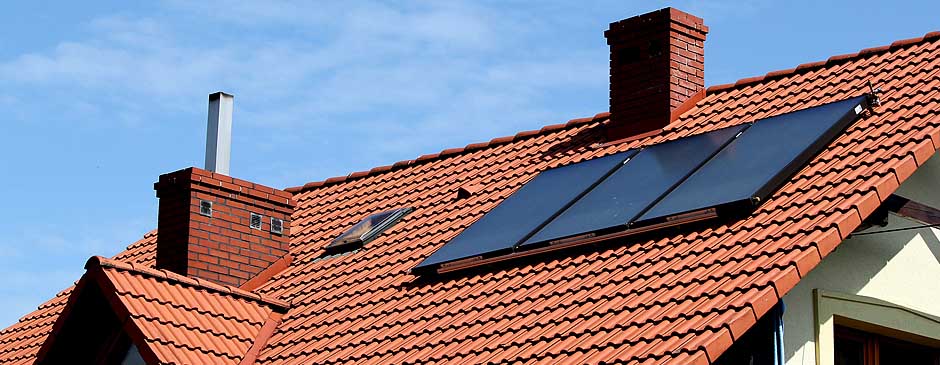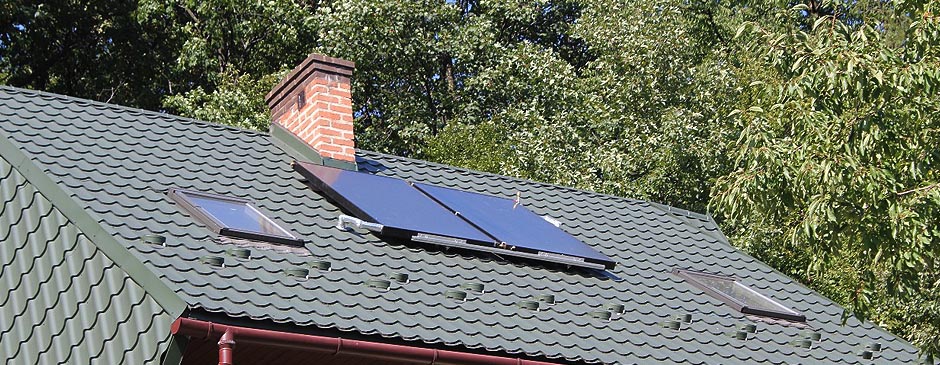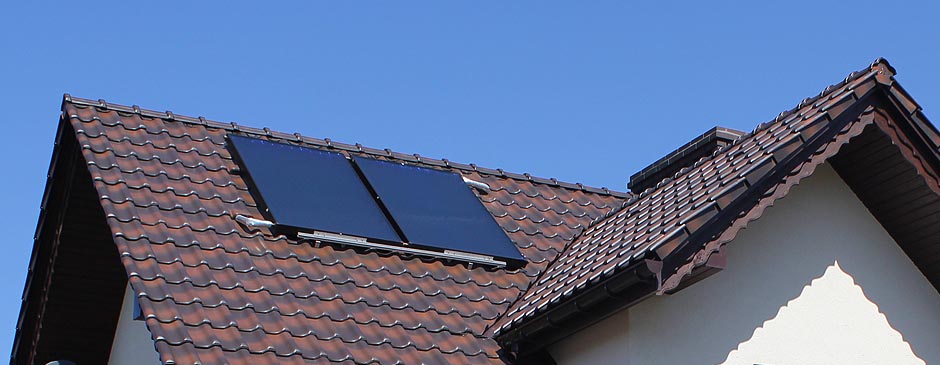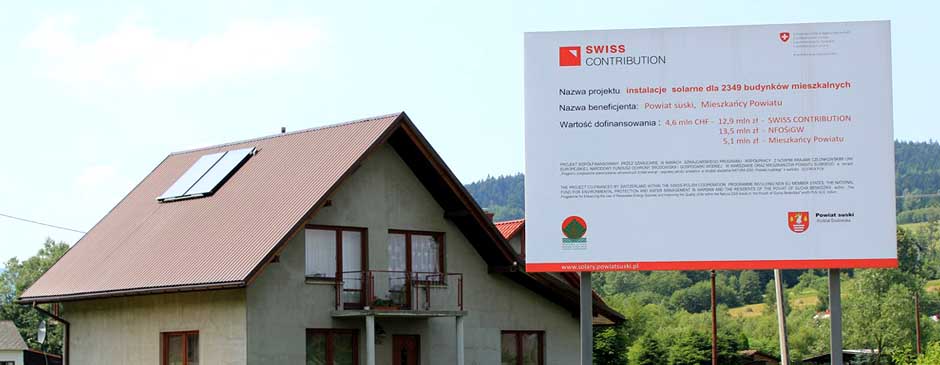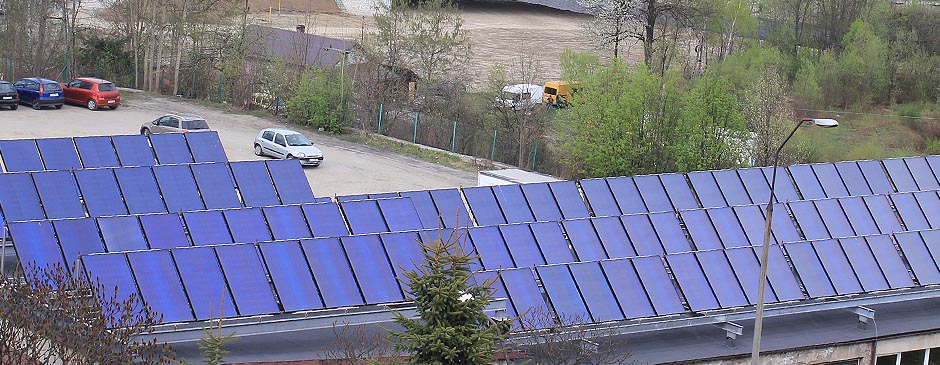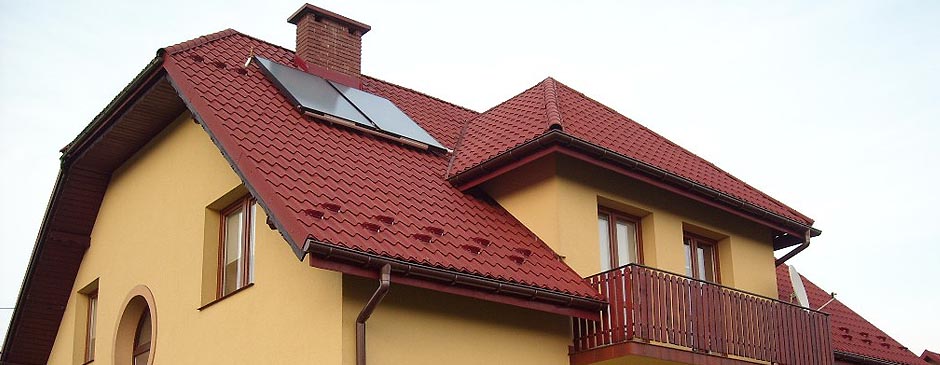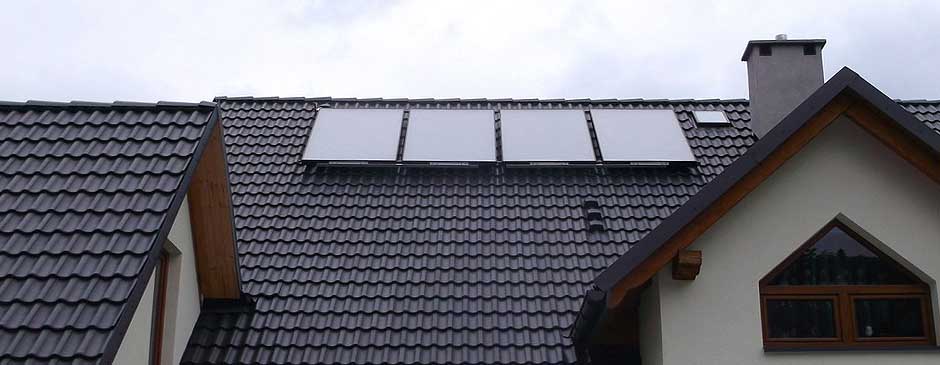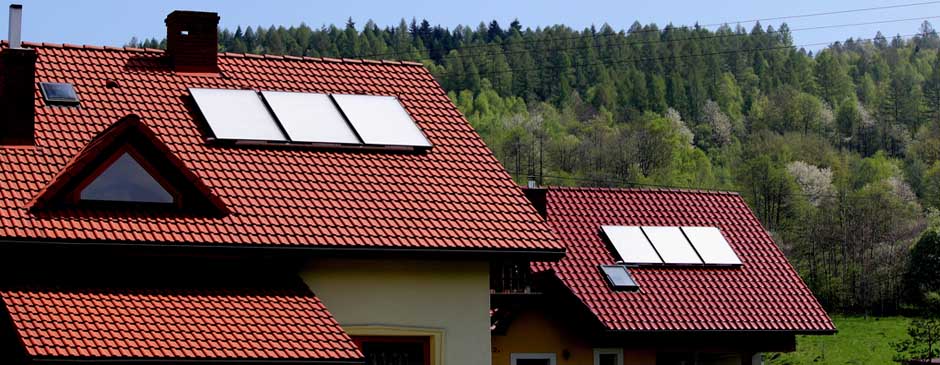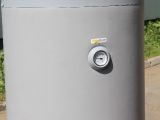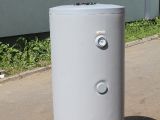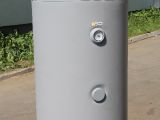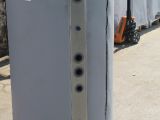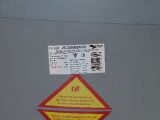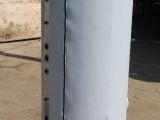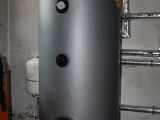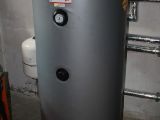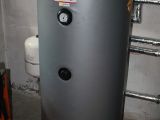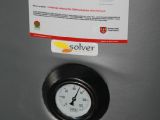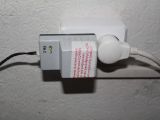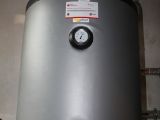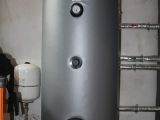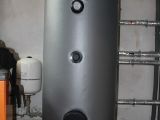Tanks are devices used to heat up and store domestic hot water, equipped with two independent spiral coils (which is why they are often referred to as bivalent tanks), which makes it possible to connect them to two power sources, e.g. a central heating boiler and solar collectors.
As part of the project, three types of tanks (heat exchangers), varying in volume, are used in residential buildings:
- about 300 l of the following size: height 1430 mm, diameter including insulation 650 mm
- about 400 l of the following size: height 1530 mm, diameter including insulation 750 mm
- about 500 l of the following size: height 1780 mm, diameter including insulation 750 mm
The above-mentioned tanks have the following parameters:
- they are made of enamelled steel
- an electric immersion heater on a 1/2″ plug can be fitted inside
- they have 50 mm insulation made of foam with heat conductivity of λ≤ 0,035 W/(m*K)
- they have a sky conversion coating
- they are equipped with a titanium anode (does not need to be changed and ensures adequate protection against corrosion)
- they have a thermometer indicating the temperature in the tank
When tanks were selected, along with volume, the following parameters were taken into account:
- thickness and thermal conductivity of insulation in order to prevent quick cooling of the hot water stored in the tank thus ensuring its longer availability for users.
- the type of anode used. There are magnesium and titanium anodes. Initially, magnesium anodes were envisaged, but in order to eliminate the need of replacing them in the future, titanium anodes were purchased. They do not require changing and, additionally, the guarantee period for tanks could be extended from 60 to 84 months as a result of their application.
Tank manual > see
